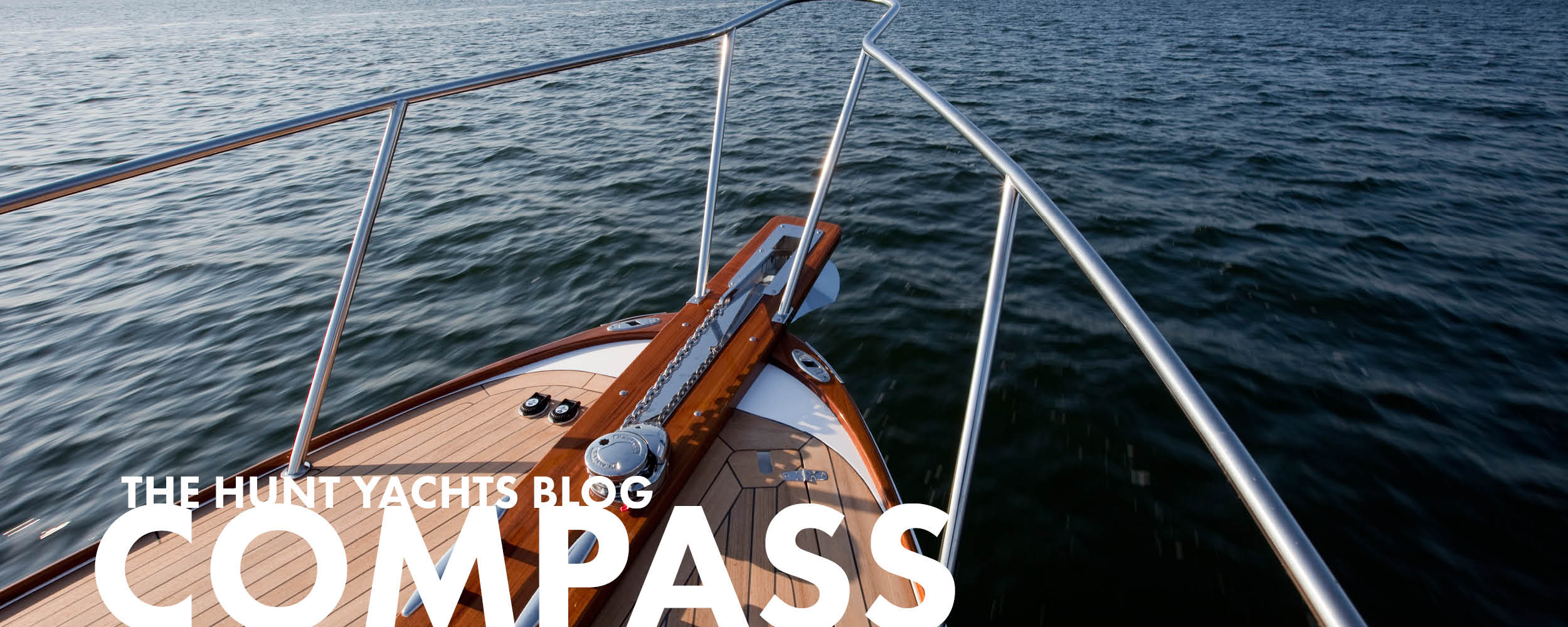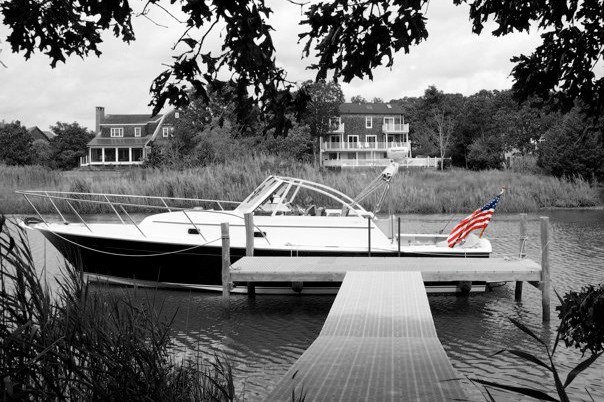Article No. 1 in a series about the Proven Performance of Hunt hulls. This article addresses several myths published about the deep-V and provides tested truths about the newest generation of deep-V hulls.
It’s also important to understand that hard chine boats are generally more stable than round bilged boats. This is because the hard edge of the chine is more resistant to rolling than a nice soft round edge. A hard chined boat equal in waterline beam to a round bilged boat will be stiffer.
Static stability is only part of the picture however. Another component in planing boats is dynamic stability. And it is an important one. The same forces that lift a planing boat above the water also stabilize the boat and counteract rolling. Displacement boats have no such benefit, thus the need for fin stabilizers and flopper stoppers. Planing boats gain stability once on plane. They actually are stiffer running at speed. The deep-v has the added advantage due to the deadrise because the planing forces are always working to right the boat. These forces are acting normal to the surface of the hull through the center of lift. On flat bottomed hulls these forces are acting normal to the bottom also, but do not counteract a roll.
A few years ago Grady White asked us to design some planing catamarans. We looked at a lot of catamaran hulls and seatrialed many before we designed the Grady cats. We discovered that the same speeds were attained by mono-hulls and catamarans if the weights and horsepower were equal.
The major factor in efficiency and speed is weight. Heavy boats are slower and need more power. Deadrise has little effect on efficiency when looking at real boats in the water as opposed to theoretical tests. So many other factors can make a much bigger difference. Compare for yourselves. Look at the boat tests in the magazines. Even if these are not the most scientific, they can be used for comparison. Compare the fuel efficiency of Hunt Yachts to other boats, and you will see we are as good as or better than most. Also note that planing hulls don’t have to be any less efficient than displacement hulls.
We put the ride first and the housekeeping second, so on the unpredictable ocean, you will be comfortable and confident at all times, in all seas.
Read More
TRUTH: Today’s deep-vs do not roll any more than flatter bottoms of the same beam.
At-rest or static stability, is largely dependant on vertical center of gravity and waterline beam. Early deep-vs were designed to float with their chines clear of the water for speed, so they were narrow at the waterline, skinny, for more speed. The Bertram-31 and others of that vintage were light and fast for their time but did roll from chine to chine when at rest in a beam sea. Today we address that problem by designing each hull to have its chine in the water at rest for about half of its waterline. This creates a wider beam on the water and and a stable boat. Today’s deep-vs do not roll any more than flatter bottoms of the same beam.It’s also important to understand that hard chine boats are generally more stable than round bilged boats. This is because the hard edge of the chine is more resistant to rolling than a nice soft round edge. A hard chined boat equal in waterline beam to a round bilged boat will be stiffer.
Static stability is only part of the picture however. Another component in planing boats is dynamic stability. And it is an important one. The same forces that lift a planing boat above the water also stabilize the boat and counteract rolling. Displacement boats have no such benefit, thus the need for fin stabilizers and flopper stoppers. Planing boats gain stability once on plane. They actually are stiffer running at speed. The deep-v has the added advantage due to the deadrise because the planing forces are always working to right the boat. These forces are acting normal to the surface of the hull through the center of lift. On flat bottomed hulls these forces are acting normal to the bottom also, but do not counteract a roll.
TRUTH: There is not much difference in speed between well designed planing hull shapes.
MYTH: “DEEP-VS ARE HARD TO PUSH” – This is another old tale that we can surmise comes from the generality that most deep-vs are highly powered to go fast so they use a lot of horsepower. Any boat trying to go fast requires a lot of power. We do not see much variation in efficiency from hull to hull if we compare boats of similar dimensions and weight. Differences in hull shape, beam, chine shape, struts, rudders, propellers, all those things together do make a difference, but overall, there is not much difference in speed between well designed planing hull shapes. Note the emphasis.A few years ago Grady White asked us to design some planing catamarans. We looked at a lot of catamaran hulls and seatrialed many before we designed the Grady cats. We discovered that the same speeds were attained by mono-hulls and catamarans if the weights and horsepower were equal.
The major factor in efficiency and speed is weight. Heavy boats are slower and need more power. Deadrise has little effect on efficiency when looking at real boats in the water as opposed to theoretical tests. So many other factors can make a much bigger difference. Compare for yourselves. Look at the boat tests in the magazines. Even if these are not the most scientific, they can be used for comparison. Compare the fuel efficiency of Hunt Yachts to other boats, and you will see we are as good as or better than most. Also note that planing hulls don’t have to be any less efficient than displacement hulls.
TRUTH: Not all Deep-V's are the same.
The Hunt deep-v is the original, and it also has evolved. While it is still very similar to Ray’s original concept, we have improved it and tailored it for every application from 10 ft. PWCs to 110 ft. Motoryachts. Our 50 years experience has taught us how to make it better. If you look closely at hulls at a boat show or boatyard you can easily pick out a Hunt hull. Our hulls have more deadrise forward, finer waterlines, robust and sharp edged chines and strips, and generous flare. Many other hulls carry transom deadrise too far forward giving a harsher ride, let interior accommodations define hull shape above and below the waterline, have soft easily molded chines and strips that are far less effective in knocking down spray and holding the boat steady at sea.We put the ride first and the housekeeping second, so on the unpredictable ocean, you will be comfortable and confident at all times, in all seas.


